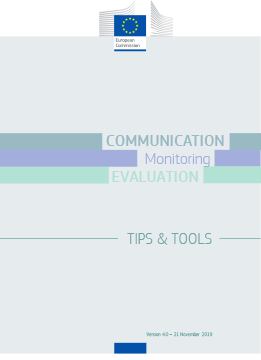Communication monitoring and evaluation: Tips & tools

Guidelines
Date: 29 nov 2019
Period: 2014-2020
Theme: Communicating Regional Policy, Structural Funds management and Governance
Languages: en
Evaluation should be a key component in any communication strategy. This principle is reflected in the Common Provisions Regulation 2021-2027 (CPR). Programmes’ authorities have a legal obligation to assess the impact of their communication measures. Programmes shall indicate in a dedicated chapter on communication the relevant indicators for monitoring and evaluation they intend to use (art. 17(3)(i)). However, the regulation leaves managing authorities free to decide on the most appropriate indicators, arrangements and timing for evaluating their communication activities.
Additionally, Member States are required to submit to the Commission detailed information about the implementation of the communication measures in the context of the Annual Review Meeting (art. 36). To meet this requirement managing authorities must carry out regular evaluations. These should also feed into the examination of communication measures by the monitoring committees (art. 35).
The rationale for these provisions is that a good evaluation is critical to ensure the quality of communication measures deployed under cohesion programmes. It helps managing authorities: monitor the process to identify weaknesses and strengths and recalibrate your approach to make it more impactful; improve the efficiency and accountability of the communication budget; and, most importantly, demonstrate and quantify the effectiveness of communication.
In past programming periods, not all programmes were able to perform systematic and thorough evaluation of their communication activities. This is owing to several factors: a fully-fledged culture of evaluating communication has yet to take root in several public bodies; weak know-how or operational capacity within the ranks of managing authorities; lack of guidance or support from national or European level.
